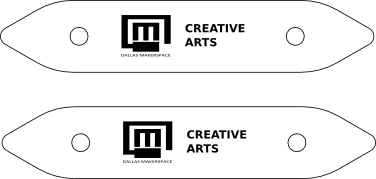Ok, here’s my thoughts:
Size–if we’re gonna make them, make a full-size properly strong one. One can always skip a peg or two warping to shorten warps for classes, but it’d be bigger if someone wants to do a longer warp.
Sturdiness–the design in the video is good, 2x4 and bigger pegs. There’s flimsy models out there but this gets high tension and heavier main body and sturdier pegs are good
Design considerations–
–peg spacing–you really want the pegs spaced far enough apart a hand holding a thread could pass between when threading the warp path. It’s a massive PIA to warp small looms. I have one full-size, a mini-inkle and a tiny, and that’s my experience.
–peg length, err on the side of longer (thus strong is useful or they now) will give more flexibility for type of weaving and projects
–length of throat piece where tension peg resides–a little longer there (couple or several inches) between closest tension setting (fully drawn toward weaving) will give a longer span between tension rod and warp pegs. For use card weaving as well as inkle, that longer span is necessary to let twist build in warp threads better before reversing direction (I skip warping my first upper peg and span straight from upper back one to tension peg and it works pretty well but a couple more inches would be even better)
–tension peg–I don’t know if it’s obvious from pics, but there HAS to be a tension peg to adjust tension as weaving progresses. Typically there’s a slot in the throat/neck (dunno correct term??) that a knob screws to loosen/slide/tighten. There’s another method but hard to explain and not typical (for a reason, clunky).
–General design–there’s lots of plans out there, plus tons of pics, you’ll see common features. The main functionality is tensioning device, those pegs to zigzag warp. Beyond that design choices affect strength and amount of yardage. Doesn’t need to be huge monsters some people make since we can’t loan them out and have storage considerations.
Storage–no way will this fit in fiber cabinet, especially several. Associated tools, yeah. The wheel is on top of cabinet to protect it. A little awkward but best anyone could come up with. There IS room for the looms there. I think it’d be fine and certainly lighter than the spinning wheel  I also am not a fan of much up there since others and I are short but it’s doable. Also it’s messy and a potential hazard. The other option would be lower on the other cubby shelves (decent footprint though) or hung on wall. My opinion is on top of fiber cabinet until we think of something more brilliant.
I also am not a fan of much up there since others and I are short but it’s doable. Also it’s messy and a potential hazard. The other option would be lower on the other cubby shelves (decent footprint though) or hung on wall. My opinion is on top of fiber cabinet until we think of something more brilliant.
Accessories–no one mentioned I think, but while cutting wood, need a shuttle for it. Think flat piece of wood about 1/8" thick, maybe 1.5-2" x 4" with 1" half-circles in end, one long edge taper-sanded to thin bladed edge (still strong though), whole thing pretty smooth
I think that might have caught all the questions but I can’t go back and look to see what I missed while typing.
I just set up a login for this so dunno how notifications will work, but if someone has another question or needs clarification on what I noted, feel free to email me directly if I seem to respind slowly here: [email protected]
Note that I’m completely out of pocket this weekend due to being at my shop at the renfair.
I like that this is getting going. Inkle weaving is a great gateway drug for weaving concepts. Plus built right, we can use it for card weaving and band weaving (I got a Norwegian band weaving book for Christmas that we might have to play with). It’s also a great use to start funneling what we’re making in spinning class 







 Although that can be fun.
Although that can be fun.



